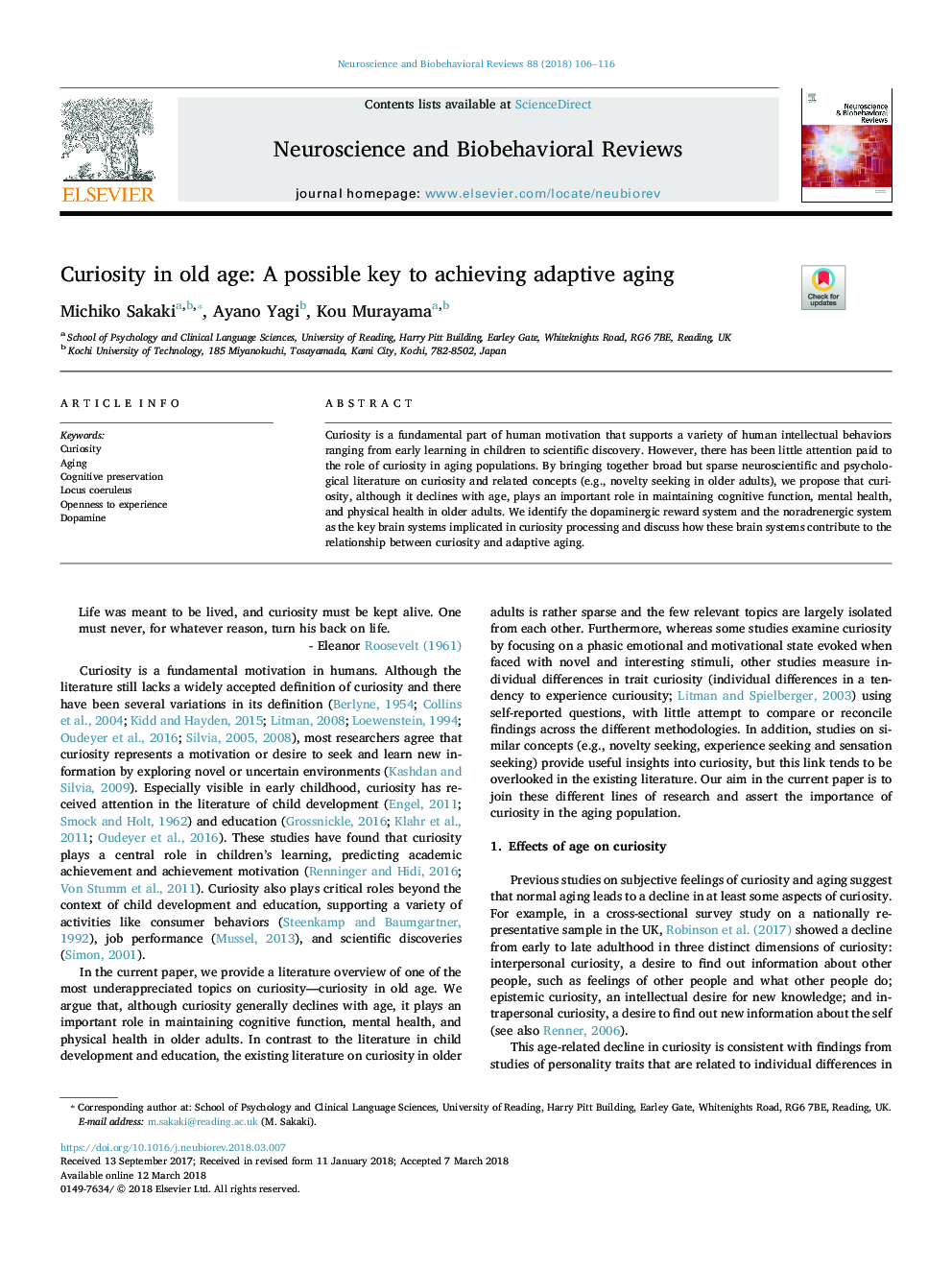| کد مقاله | کد نشریه | سال انتشار | مقاله انگلیسی | نسخه تمام متن |
|---|---|---|---|---|
| 7301874 | 1475283 | 2018 | 11 صفحه PDF | دانلود رایگان |
عنوان انگلیسی مقاله ISI
Curiosity in old age: A possible key to achieving adaptive aging
ترجمه فارسی عنوان
کنجکاوی در سالخوردگی: یک کلید ممکن برای رسیدن به سن انطباقی است
دانلود مقاله + سفارش ترجمه
دانلود مقاله ISI انگلیسی
رایگان برای ایرانیان
کلمات کلیدی
ترجمه چکیده
کنجکاوی بخش مهمی از انگیزه انسان است که از انواع رفتارهای ذهنی انسانی که از یادگیری زودرس کودکان تا کشف علم پشتیبانی می کند پشتیبانی می کند. با این حال توجه کمی به نقش کنجکاوی در جمعیت های پیرامون شده است. با ادغام ادبیات عصبی و روانشناختی گسترده اما کمیاب درباره کنجکاوی و مفاهیم مرتبط (به عنوان مثال، جستجوی نوآوری در افراد مسن) ما پیشنهاد می کنیم که کنجکاوی، هرچند با سن کاهش می یابد، نقش مهمی در حفظ عملکرد شناختی، سلامت روانی و جسمی سلامت در افراد مسن. ما سیستم پاداش دوپامینرژیک و سیستم نورآدرنرژیک را به عنوان سیستم های اصلی مغز مرتبط با پردازش کنجکاوی تشریح می کنیم و در مورد چگونگی این سیستم های مغز در رابطه بین کنجکاوی و پیری انطباقی کمک می کنیم.
موضوعات مرتبط
علوم زیستی و بیوفناوری
علم عصب شناسی
علوم اعصاب رفتاری
چکیده انگلیسی
Curiosity is a fundamental part of human motivation that supports a variety of human intellectual behaviors ranging from early learning in children to scientific discovery. However, there has been little attention paid to the role of curiosity in aging populations. By bringing together broad but sparse neuroscientific and psychological literature on curiosity and related concepts (e.g., novelty seeking in older adults), we propose that curiosity, although it declines with age, plays an important role in maintaining cognitive function, mental health, and physical health in older adults. We identify the dopaminergic reward system and the noradrenergic system as the key brain systems implicated in curiosity processing and discuss how these brain systems contribute to the relationship between curiosity and adaptive aging.
ناشر
Database: Elsevier - ScienceDirect (ساینس دایرکت)
Journal: Neuroscience & Biobehavioral Reviews - Volume 88, May 2018, Pages 106-116
Journal: Neuroscience & Biobehavioral Reviews - Volume 88, May 2018, Pages 106-116
نویسندگان
Michiko Sakaki, Ayano Yagi, Kou Murayama,
